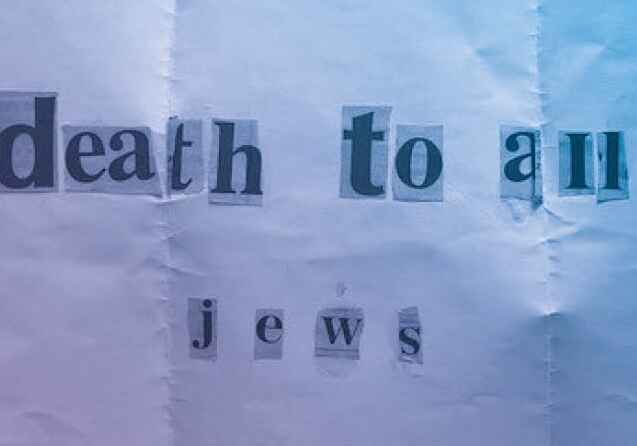CST Blog
Iran and Hizbollah's mass murder of Argentinian Jews
1 September 2009
On July 18, 1994, 85 people were killed and approximately 240 wounded in the Hizbollah truck bombing of the AMIA Jewish community centre building in Buenos Aires.
Ahmad Vahidi, designated to be Iran's new Defence Minister, is wanted by Interpol for his alleged role in the murderous attack.
A pdf report in English of the Argentinian Attorney General's report into the bombing has been issued by the Israel-based Intelligence and Terrorism Information Center (ITIC). The analysis begins with the following points:
i) Without a doubt the decision to carry out the attack was not made by a small group of Islamist extremists, but in fact was fully discussed and agreed upon with full consensus by extremely senior representatives of the Iranian regime at that time.
ii) The investigators concluded that the highest level of the Iranian regime gave the Lebanese terrorist organization Hezbollah the mission of blowing up the Jewish community center, AMIA, in Buenos Aires. The Iranian regime used the external operational infrastructure of Hezbollah, the terrorist organization which serves as a proxy to advance Iranian foreign policy.
iii) During the investigation the question of how to define Hezbollah was examined. Was it a terrorist organization or a movement fighting the Israeli occupation of Lebanon? The report declared that as far as the investigative team was concerned, it was an organization with terrorist qualities because the great amount of evidence gathered supported that definition.
iv) The report did not ignore the fact that the attack was carried out for reasons connected to the conflict in the Middle East. However, based on the evidence gathered, the investigators concluded that the main reason for the attack was the unilateral decision made by the Argentinean government to cancel the contract for providing Iran with nuclear materials and technology which had been signed two years previously by Argentina and Iran.
v) The report detailed how the Iranian regime reached the decision to launch the terrorist attack on the AMIA building in Buenos Aires. The decision itself was made by a body called the committee for special affairs, whose members at the time were Supreme Leader Ali Khamenei,2 Ali Rafsanjani, Ali Fallahijan and Ali Velayati. The committee met on August 14, 1993 in the Iranian city of Mashad and voted to carry out the terrorist attack in Argentina.
vi) The report described the extensive intelligence network the Iranian regime established in Buenos Aires without which the attack could not have been carried out. Beginning in the early 1980s, according to the report, Iranian intelligence used its embassy and cultural mission in Buenos Aires to establish the network, which included extremist elements in the Muslim community throughout Argentina.
vii) Responsible for intelligence work was the so-called Iranian cultural attaché, Mohsen Rabani, since his arrival in Argentina in 1993. He was also present at the Mashad meeting where the attack was decided on. After he returned to Argentina from the meeting, according to the report, funds were transferred to finance it. The Argentineans are in possession of recordings of telephone conversations which prove Rabanis involvement in the logistical preparations for the attack. The report determined that Iranian Intelligence Minister Ali Fallahijan was its general director. Ahmad Vahidi, who was recently nominated for the position of Iranian defense minister, also played a key role in planning and directing it.
viii) The team that carried out the attack was made up of Hezbollah operatives who arrived in Argentina on July 1, 1994. Imad Moughnieh, commander of Hezbollahs foreign intelligence (who died in an explosion in Damascus) was responsible for handing the team, and to that end also entered Argentina at the beginning of July 1994. The Argentineans have recordings of many telephone conversations made by the operational teams between Imad Moughnieh, the Hezbollah team of operatives, Hezbollah operatives in Lebanon and the Hezbollah network operating in the border triangle in Brazil.3 On July 18, the day of the attack, in the last cellular telephone conversation Imad Moughnieh made from his phone, he indicated that the mission had been accomplished.
ix) The attack was carried out by a Hezbollah suicide bomber. On July 18, 1994, at 9:53 a.m., Ibrahim Hussein Berro detonated a Renault van carrying between 300 and 400 kilograms, or 660 to 880 pounds, of explosives. The explosion killed 85 people and wounded approximately 240. The bomb was detonated in front of the Jewish community center and destroyed the entire front of the building, causing extensive damage to neighboring structures. According to the report, the modus operandi of the attack was the same as that of the one on the Israeli embassy in Buenos Aires carried out two years previously.
Read More

Antisemitic Incidents Report January-June 2025
6 August 2025

CST Summer Lunch 2025
25 June 2025
CST Annual Dinner 2025
26 March 2025
